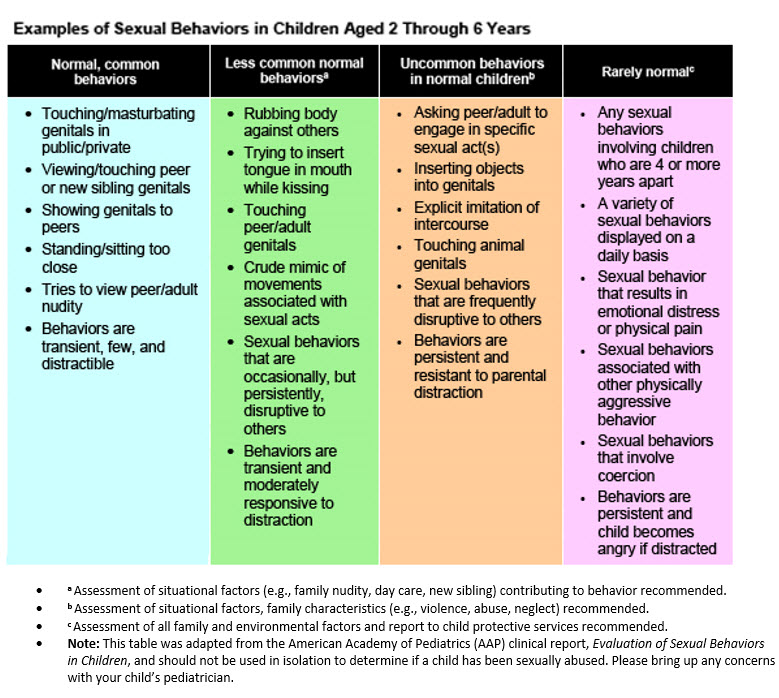It can be easy for parents to talk with their children about the differences between right and wrong, but it is often more difficult for parents to talk with their children about sexual development.
At a very young age, children begin to explore their bodies by touching, poking, pulling, and rubbing their body parts, including their genitals. As children grow older, they will need guidance in learning about these body parts and their functions.
Here’s some information and tips from the American Academy of Pediatrics (AAP) to help you tell the difference between “normal” sexual behaviors and behaviors that may signal a problem.
What’s Normal?
Here’s a list of what pediatricians say is normal, common sexual behavior in 2 through 6-year-olds.
When these behaviors happen, try to redirect your child’s attention to more appropriate behavior by saying something such as, “Grown-ups do that in private, and you should, too.” Reinforce that children should respect each other, and it is not OK to touch anyone else’s private parts. Also, remind your child to always tell you or another trusted grown-up if anyone ever touches his or her private parts.
- Touching/masturbating genitals in public or private
- Looking at or touching a peer’s or new sibling’s genitals
- Showing genitals to peers
- Standing or sitting too close to someone
- Trying to seepers or adults naked

Red Flag Behaviors
Parents also need to know when a child’s sexual behavior appears more than harmless curiosity. Sexual behavior problems may pose a risk to the safety and well-being your child and other children and can signal physical or sexual abuse or exposure to sexual activity.
Sexual behavior problems in young children include any act that:
- Occurs frequently and cannot be redirected
- Causes emotional or physical pain or injury to themselves or others
- Is associated with physical aggression
- Involves coercion or force
- Simulates adult sexual acts
Last Updated 4/1/2019
Source American Academy of Pediatrics (Copyright © 2016)
The information contained on this Web site should not be used as a substitute for the medical care and advice of your pediatrician. There may be variations in treatment that your pediatrician may recommend based on individual facts and circumstances.





